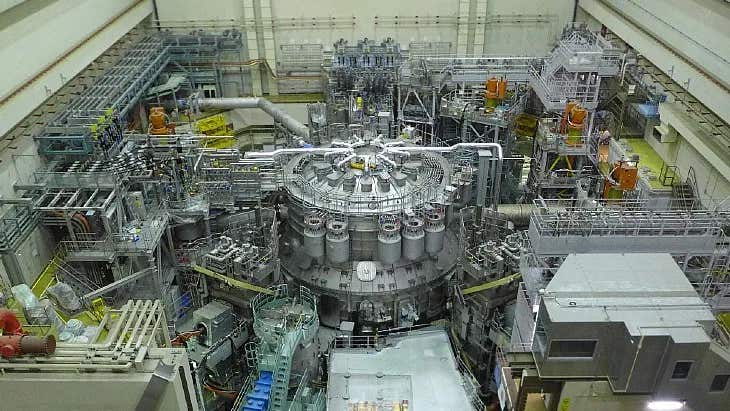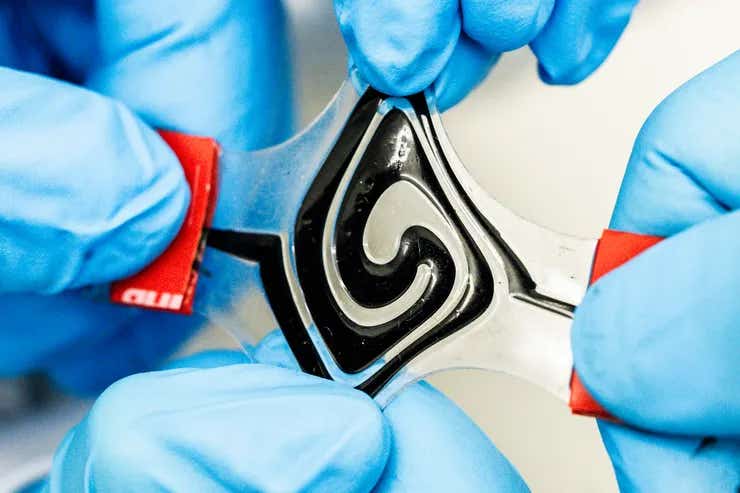Largest fusion reactor ever built set to transform global energy production
Japan is revolutionizing energy production with the launch of the JT-60SA reactor, the world’s largest experimental nuclear fusion reactor.

Japan has marked a significant milestone in energy research with the inauguration of the world’s largest experimental nuclear fusion reactor, a development poised to transform the future of energy production. (CREDIT: ITER)
Japan has taken a major step toward revolutionizing energy production with the launch of the JT-60SA reactor, the world’s largest experimental nuclear fusion reactor.
This milestone represents a crucial advancement in the quest to harness nuclear fusion, a technology many experts believe will play a key role in meeting future energy demands. Unlike conventional nuclear power, which relies on fission, fusion has the potential to provide a nearly limitless and carbon-free energy source.
Fusion differs fundamentally from the nuclear fission used in today’s power plants. Instead of splitting an atomic nucleus, fusion involves combining two atomic nuclei, a process that releases vast amounts of energy. This innovative approach mimics the reactions powering the sun and stars. While fusion holds tremendous potential, it remains in the experimental stage, requiring further breakthroughs before it can become a practical energy solution.
The primary objective behind the JT-60SA reactor is to assess the feasibility of fusion as a safe, large-scale energy source. Scientists aim to achieve a net energy gain, meaning the reactor must generate more energy from fusion than it consumes in the process. Success in this endeavor could pave the way for future commercial fusion power plants, potentially transforming the global energy landscape.
Located in a massive hangar in Naka, just north of Tokyo, the JT-60SA reactor is an engineering marvel. The six-story-high machine features a donut-shaped "tokamak" vessel designed to contain swirling plasma heated to an astonishing 200 million degrees Celsius (360 million degrees Fahrenheit). This extreme temperature is necessary to overcome the natural repulsion between atomic nuclei and initiate the fusion reaction.
This ambitious project is the result of an international collaboration between Japan and the European Union. It serves as a crucial stepping stone toward the International Thermonuclear Experimental Reactor (ITER), a much larger fusion experiment currently under construction in France. Lessons learned from JT-60SA will inform the development of ITER, bringing scientists closer to the dream of a practical fusion energy source.
Related Stories
The core aspiration shared by both the JT-60SA and ITER projects is to coax hydrogen nuclei to fuse into a heavier element, helium, liberating energy in the form of light and heat.
This process seeks to replicate the natural phenomenon occurring inside the sun, where fusion reactions power our solar system. Achieving the elusive "net energy" in nuclear fusion has been the holy grail of researchers in the field.
Reflecting on this significant achievement, Sam Davis, the deputy project leader for the JT-60SA, expressed his optimism, stating that the device will "bring us closer to fusion energy." He further emphasized the collaborative nature of the endeavor, involving more than 500 scientists and engineers and over 70 companies across Europe and Japan.
EU energy commissioner Kadri Simson praised the JT-60SA, describing it as "the most advanced tokamak in the world" and characterizing the commencement of operations as "a milestone for fusion history." Simson also highlighted fusion's potential to become a pivotal component of the global energy mix in the latter half of this century.
The achievement of "net energy gain" in fusion was notably demonstrated in December at the National Ignition Facility at Lawrence Livermore National Laboratory in the United States. This facility, home to the world's most extensive laser system, employs a distinct approach called inertial confinement fusion. In this method, high-energy lasers are simultaneously directed into a minuscule cylinder containing hydrogen.
The U.S. government hailed this accomplishment as a "landmark achievement" in the quest for an abundant, clean power source, and a means to reduce reliance on carbon-emitting fossil fuels, which contribute to climate change and geopolitical instability.
One of the paramount advantages of fusion over fission is its inherent safety. Fusion carries no risk of catastrophic nuclear accidents like those witnessed in Fukushima, Japan, in 2011.
Furthermore, fusion power plants produce substantially less radioactive waste compared to their fission-based counterparts, making them a more sustainable and environmentally friendly energy solution.
As the world grapples with the pressing need to transition to cleaner and more sustainable energy sources, the successful operation of the JT-60SA reactor in Japan, along with advancements in fusion research globally, presents a glimmer of hope. The potential for fusion to revolutionize our energy landscape cannot be overstated.
Fusion's unique promise lies in its ability to provide virtually limitless energy, while simultaneously minimizing the environmental and safety concerns associated with nuclear fission.
If fusion can indeed achieve net energy production on a large scale, it could serve as a crucial pillar of a future characterized by clean, reliable, and sustainable energy generation.
However, it is essential to acknowledge the challenges and hurdles that remain on the path to practical fusion energy. The International Thermonuclear Experimental Reactor (ITER), while ambitious and promising, faces budgetary issues, delays, and significant technical challenges. These obstacles underscore the complexity of achieving sustained nuclear fusion.
Despite these challenges, the inauguration of the JT-60SA reactor in Japan serves as a potent reminder of the determination and collaboration of scientists, engineers, and nations worldwide in the pursuit of a clean energy future.
| Characteristic | Nuclear fusion | Conventional nuclear reactors |
| Type of nuclear reaction | Fusion | Fission |
| Fuel | Light elements, such as deuterium and tritium | Heavy elements, such as uranium and plutonium |
| Waste Products | Helium, a non-radioactive gas | Highly radioactive fission products |
| Safety | Inherently safe, as the reaction will automatically stop if the reactor is damaged | More hazardous, as the fission reaction can continue even if the reactor is shut down |
| Technical challenges | Very difficult to achieve and maintain the high temperatures and pressures required for fusion | Well-established technology, but there are still some challenges to improve efficiency and reduce costs drive_spreadsheetExport to Sheets |
Fusion's potential to revolutionize the global energy landscape is a beacon of hope in our quest to address climate change, reduce our dependence on fossil fuels, and ensure a sustainable future for generations to come.
As we continue to explore this groundbreaking technology, the prospects of achieving net energy production offer hope for a cleaner, more sustainable, and secure energy future. Fusion's potential to revolutionize the world's energy landscape cannot be underestimated, and the collaborative efforts of scientists and nations in this endeavor demonstrate the commitment to a better future for all.
Potential benefits of nuclear fusion:
- Nearly limitless fuel supply: The fuel for nuclear fusion is abundant and can be easily extracted from seawater.
- Low-carbon energy source: Nuclear fusion does not produce any greenhouse gases.
- Inherently safe: The fusion reaction will automatically stop if the reactor is damaged.
- Low-level radioactive waste: Nuclear fusion produces only helium, a non-radioactive gas.
Potential challenges of nuclear fusion:
- Very difficult to achieve and maintain the high temperatures and pressures required for fusion.
- Materials development: The materials used in a fusion reactor must be able to withstand extreme temperatures and pressures.
- Cost: Nuclear fusion reactors are still in the early stages of development, and they are likely to be very expensive to build.
Note: Materials provided above by the The Brighter Side of News. Content may be edited for style and length.
Like these kind of feel good stories? Get the Brighter Side of News' newsletter.
Joseph Shavit
Head Science News Writer | Communicating Innovation & Discovery
Based in Los Angeles, Joseph Shavit is an accomplished science journalist, head science news writer and co-founder at The Brighter Side of News, where he translates cutting-edge discoveries into compelling stories for a broad audience. With a strong background spanning science, business, product management, media leadership, and entrepreneurship, Joseph brings a unique perspective to science communication. His expertise allows him to uncover the intersection of technological advancements and market potential, shedding light on how groundbreaking research evolves into transformative products and industries.



